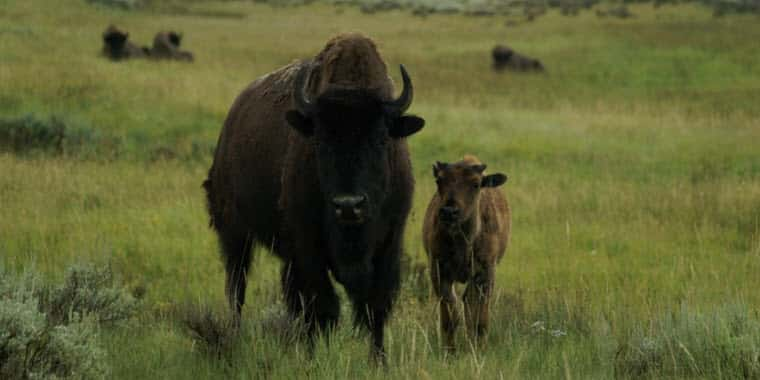The National Park Service (NPS) released the Final Environmental Impact Statement (FEIS) for a Bison Management Plan at Yellowstone National Park. The FEIS presents a broad range of actions for managing bison inside the park. The NPS says the plan allows the agency to manage bison based on new scientific information and changed circumstances, explore ways to increase the transfer of bison to American Indian Tribes, and continue working closely with Tribal Nations and agency partners in management.
NPS says the plan continues the Park’s commitment to the objectives of the Interagency Bison Management Plan (IBMP) which include: 1) maintain a wild, free-ranging bison population; 2) reduce the risk of brucellosis transmission from bison to cattle; 3) manage bison that leave Yellowstone National Park and enter the State of Montana; and 4) maintain Montana’s brucellosis-free status for domestic livestock.
On June 7, 2024, the Notice of Availability of the FEIS will publish in the Federal Register and initiates a 30-day wait-period. At the conclusion of the wait-period, the NPS will sign and publish a Record of Decision, detailing the selected action.
The NPS’s FEIS considers alternatives to managing bison with varying population ranges and management activities. These include:
Alternative 1: The NPS would continue management of bison pursuant to the existing Interagency Bison Management Plan (IBMP), approved in 2000. This would maintain a population range of bison similar to the last two decades (3,500 to 5,000 bison after calving), continue hunt-trap coordination to balance population regulation in the park by using harvest and hunting opportunities outside the park, increase the number of brucellosis-free bison relocated to Tribal lands via the Bison Conservation Transfer Program, and work with the State of Montana to manage the already low risk of brucellosis spreading from bison to cattle.
Alternative 2-Preferred Alternative: Bison would be managed within a population range of about 3,500 to 6,000 animals after calving with an emphasis on using the Bison Conservation Transfer Program to restore bison to Tribal lands and Tribal treaty harvest, and public hunting outside the park to regulate numbers.
Alternative 3: The NPS would rely on natural selection, bison dispersal, and public and Tribal harvests in Montana as the primary tools to regulate numbers, which would likely range from 3,500 to 7,000 or more animals after calving.
The Preferred Alternative would prioritize restoring bison to tribal lands and tribal harvests outside the park to provide American Indian Tribes with access to traditional resources. Bison are expected to range between about 3,500 and 6,000 bison after calving and may expand into new areas of the park.
Larger numbers also could occasionally result in larger migrations into designated management areas in Montana, including portions of the Custer Gallatin National Forest that would support conservation and increase tribal harvest opportunities. The NPS would capture bison when there is available space in the Bison Conservation Transfer Program (BCTP) and release brucellosis-negative animals that do not qualify for the program. The NPS would selectively transfer for processing brucellosis-positive animals identified when selecting for the BCTP
The NPS would shift away from transfer for processing as a primary tool for population management. The NPS would establish 5,200 bison in early winter as a population assurance threshold. When there are more bison, the NPS would manage for a decreasing population, where the post-calving population is smaller than the early winter population. The NPS would first rely on harvests to reduce numbers but would resume shipments for processing when necessary.
Since 2013, bison numbers have ranged between about 4,400 and 5,900 after calving. However, numbers likely would increase with less intrusive management. The Park Service says their research indicates there is sufficient forage in the park to sustain about 10,000 bison during summer and 6,500 during winter although large variations in weather and grass production from year to year add complexity to this estimate. Near these estimates foraging efficiency and bison condition should decrease and more bison should migrate to lower-elevation areas in and outside the park.
###
NPS


